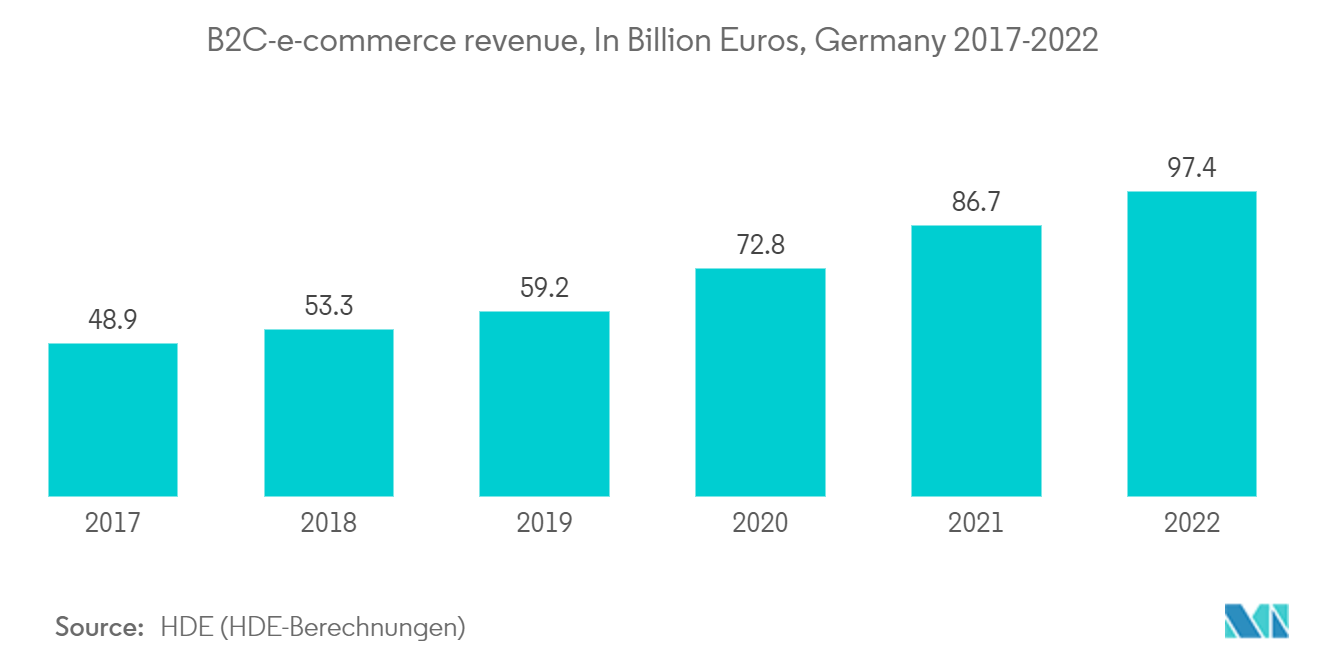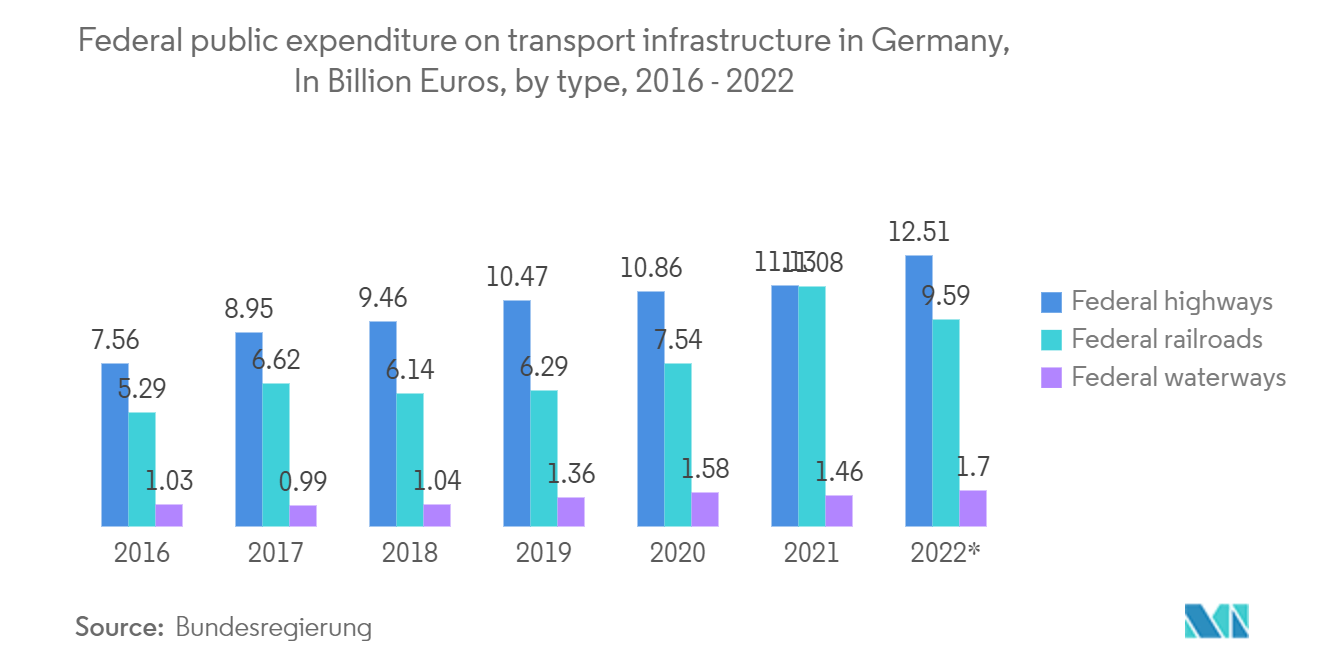Market Trends of Germany Last Mile Delivery Industry
Growth in E-commerce is Driving the Market
The e-commerce platform market in Germany is mainly driven by the high internet penetration in the region and the growing use of smart devices. With increasing urbanization, many traditional businesses are turning to e-commerce platforms to increase the number of customers and market share, reduce overhead expenses, and increase the sales of their products.
In Germany, the majority of online stores accept PayPal or credit cards as the payment method. Many websites also accept bank transfers. Most websites accept invoices/buy now and pay later, and online customers can cancel their orders within 14 days and return their goods or services for any reason or no reason at all. There are so many benefits offered by e-commerce companies that the e-commerce industry in the region will continue to expand over the next few years.
Fashion makes up the biggest chunk of German e-commerce revenue (24.1%), followed by food and personal care (22.2%), furniture and appliances (20.2%), electronics and media (17.4%), and toys, and hobby and DIY (16.0%).

Government Investment in Transport Infrastructure Supports Last Mile Delivery
Last-mile delivery can be improved by investing in infrastructure that improves transportation networks, reduces congestion, and improves logistical efficiency. Roads, bridges, and ports that are upgraded will allow goods to be transported more quickly and efficiently, resulting in shorter delivery times. Smart traffic management systems (TMS) and dedicated delivery lanes can help reduce congestion and ensure timely deliveries. The digital infrastructure that supports real-time monitoring optimizes routes and improves communication between the delivery team and customers, which can also improve last-mile delivery.
Germany’s federal government plans to allocate several million euros more in transport infrastructure spending in 2022 compared to 2021. The largest increase in transport infrastructure spending occurred in 2021 when EUR 11 billion (USD 12.01 billion) was allocated to federal railways, which was more than double the amount allocated in 2016. Over EUR 12 billion will be allocated to federal highways in 2022, and EUR 17 billion (USD 18.01 billion) will be allocated to waterways.
The expansion of the B247 became the largest infrastructure project in Northern Thuringia. The project consists of building two to four new lanes on a 22.2 km road section, including two new bypasses, 31 structures, including two bridges and five railway bridges, eight junctions, and around 6 km of additional state and federal roads. The works will be completed by mid-2025 by subsidiaries of the VINCI Group in Germany (Eurovia, VINCI Construction Terrassement, and Via Structure) in local partnership with Thuringian companies.

